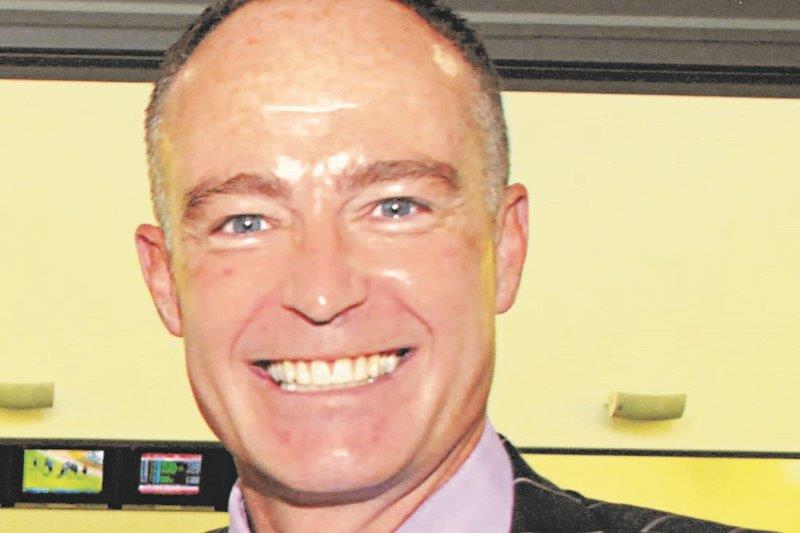Living with CBS
"Not one, but a whole herd of elephants, blocking the main street of Taupo. Their tails were swishing, their ears flapping and their huge rumps wriggling. I stood there and I thought to myself, ‘there is not a herd of elephants in the main street of Taupo today or any day’,” says Gael Spence, recalling just one of the strange, weird, but utterly realistic, visual hallucinations she began to contend with soon after receiving the devastating news she had gross, atrophic dry macular degeneration.
That was 2008, Gael was 74 years old, and life had suddenly got a lot harder. Not only was she coping with the mental stress of having lost most of her central vision, her driver’s licence and her independence, a GP then told her she probably had early dementia after she shared her visions of large blobs on the shower curtain, bugs on the carpet, faces on the wall and that herd of elephants in Taupo.
Her problems were compounded by the eye health world’s lack of understanding or consideration to her plight, she explains, recalling her stress and struggle to make the 70-kilometre trip from Mangakino, where she lives, to Rotorua to attend her ophthalmology appointments.
“I tried everything to get to there. I spoke with various support groups - Age concern, the Blind Foundation, Lions, Red Cross, Macular Degeneration New Zealand (MDNZ) – but to no avail. I don’t know anyone who can drive me; I cannot see a phone book; I cannot look up buses. How could I ring a bus? I just could not get to Rotorua. I even thought if I started walking at 4 am, maybe I could I make it...”
Feeling desperate and isolated, plagued by weird visions and trapped in a fading world, Gael admits she considered suicide. “Should I walk into the lake and end it all?” she thought.
Not dementia?
Then one day a friend of Gael’s was reading an article about Charles Bonnet Syndrome (CBS) in the MDNZ magazine Viewpoint, and asked her, “Gael have you seen this article? It’s all about you. The article said the hallucinations could easily be mistaken for early dementia.”
Armed with this first piece of positive knowledge, Gael went back to her usual GP and cautiously asked if he thought she could have CBS. The GP ran her through some dementia screening tests – she passed – and said, yes, he thought she was suffering from CBS. Fortunately, her GP was familiar with the condition and so was able to reassure her she was mentally as able as she’d always been.
Charles Bonnet Syndrome, sometimes known as visual release hallucinations, is a common condition among people with partial or severe blindness (see box story). The main cause of CBS, according to psychiatrists, is the loss of vision and how your brain reacts to this loss. “When you lose your sight, your brain doesn’t receive as much information and fills in these gaps by releasing new fantasy pictures, patterns or old pictures that it has stored,” explains the Royal National Institute of the Blind in the UK.
Gael was simply relieved she wasn’t losing her mind and could now rationalise the strange visions she kept having, but she was concerned how few people appeared to be aware of CBS and other problems visually-impaired people have to contend with, so she shared her story with MDNZ.
She’s so glad she returned to her GP and asked about CBS, she says, as that’s when she started to cope. Though she knew the images and hallucinations were not real, the fear of losing her mind was great, so telling people you’re having hallucinations is not an easy thing to do.
She hopes her story will bring awareness to the condition and urges all professionals, especially GPs, to acknowledge and learn more about CBS. “Don’t be afraid to commit to this phenomenon just because it’s not easily explained,” she says. “As a visually impaired person, life can be tough enough when you cannot even go to the bank by yourself, let alone sign a withdrawal slip.”
Gael says she’s thankful to groups like Age Concern and MDNZ for their support and hopes, in the future, carers will have more insight into the everyday difficulties someone who is vision impaired experiences.
As for finding her place in this new life of hers, she’s giving it her all despite her disabilities and, after some encouragement by her GP, has even written a children’s book entitled, 'Who do these shoes belong to?'. Illustrated by her grand-daughter, Melanie, the book takes the reader on a search for the owner of some mysterious shoes, providing a peek into the life of someone with central scotoma.
Understanding CBS
NZ Optics’ asked Tauranga-based ophthalmologist and MDNZ trustee, Dr Andrew Thompson, to talk about Charles Bonnet Syndrome (CBS).

Dr Andrew Thompson
Charles Bonnet Syndrome (CBS) is a common condition characterised by the occurrence of phantom images or hallucinations in a person living with acquired vision loss. The condition can affect people of any age with partial sight or severe blindness and generally begins weeks to months after sight loss has occurred.
The condition is experienced by those who are psychological or cognitively sound, however, patients may often think that they are going mad.
The condition was initially described by Swiss scientist Charles Bonnet in 1760, but was not evident in medical literature until the 1980s. Hallucinations vary from abstract shapes and colours to detailed images of people, animals and landscapes. In contrast to the images a partial-sighted person may see, the hallucinations of CBS’ sufferers can be very clear and detailed, and are usually of nice things. Occasionally, people may experience frightening images but this is uncommon. Most people find the hallucinations become less frequent over 18 months to two years, though many will still have occasional hallucinations up to five years later.
What causes CBS?
CBS appears to be poorly understood, though it is quite a common condition in people who have lost their vision. The exact cause is not known. For a normal sighted person, the brain receives visual input and this stops the brain from generating its own images. When sight is lost, it is thought the brain starts to fill in gaps by generating hallucinatory images, patterns or previously stored images as it is not receiving visual input in the usual manner. It is not a sign of psychiatric illness or madness, even if patients consider it may be.
How common is CBS?
The reported prevalence rates for CBS vary widely. An Australian study reported the prevalence to be 17.5% in 2008.
Approximately 40% to 65% of CBS-affected people tend not mention their symptoms to anyone, reluctant for fear of being labelled mad. So, it is sensible to enquire about CBS when seeing patients with partial or severe vision loss.
CBS only affects vision and does not cause hallucinations involving other senses. Patients with CBS are aware that what they are seeing isn’t real, although the hallucinations can seem very real.
What can be done about CBS?
There is no cure for CBS and drug therapy is not usually indicated to treat the hallucinations. For most people with CBS, a simple explanation of what is happening is all that is required to put their mind at rest.
For more information contact: www.charlesbonnetsyndrome.org


























